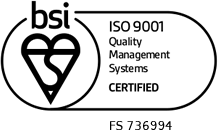Advanced sensors and sensor systems play a critical role in how we understand our climate and in crucially, our understanding of how it is changing. Low earth orbit and geostationary orbit satellite imaging systems can record temperatures, wildfires, ocean temperatures, vegetation and deforestation and much more. Remote earth observation and hyperspectral imaging provide the data that our climate and environmental models rely on, and which in turn allow mankind to plan geospatial and planetary solutions and have also become invaluable in disaster management.
Chemical sensing of pollutants in our waterways, rivers and oceans is also an essential area of study.
The applications for advanced materials, micro-scale electromechanical systems (MEMS), nano-scale electromechanical systems (NEMS) in environmental science is very wide indeed. They include Lab On A Chip (LOC), micro total analysis systems (µTAS), Specialised sensor arrays, microfluidic systems and more.
Piezoelectric applications in Environmental Science and Sustainability Projects
Advances are obvious in the field of environmental monitoring, especially in the area of chemical and biological sensors, which have given rise to new materials applications, especially enabling MEMS design.
Piezoelectric sensors are used for the measurement of volatile gases, vapours, chemical pollutants and even biological contaminants and antibodies. During sensing, a piezoelectric crystal adsorbs analytes on its surface, which in turn influences the material performance (eg: resonant frequency). In order to limit the range of adsorbed chemicals, selective surface films are usually attached and/or coatings are added to the piezoelectric material. The functionality of the device and its overall system response is largely determined by this active layer.
The developments taking place in the area of chemical sensors allow for the selective design of devices towards sensing specific gas/solution compounds or a family of chemicals.
Deposition of highly selective films allows for sensing even bigger molecules, such as peptides. In addition, in some cases, the sensor is equipped with an electrochemical cell that contains the sample electrolyte solution and electrodes and acts as an electrochemical sensor.
In some applications, the use of the quartz crystal microbalance (QCM) technique, which measures a mass per unit area, based on the change in frequency of a quartz crystal resonator, is still very popular.



